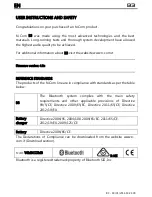
3.3.7 Diagnostic Information and Procedures
3.3.7.1 Diagnosis Description
Refer to
get familiar with the contents of system functions and operation before start system
diagnostic, so that it will help to determine the correct diagnostic steps, more importantly, it will also help to determine whether the
customer described the situation is normal.
3.3.7.2 Visual Inspection
Transmission common malfunctions are: hard to shift, gear stuck, gear collision and grinding noise other abnormal sound. The
clutch, drive system malfunction can also cause the above symptoms. During the service, we need carefully analyze and distinguish.
1. Prior to transmission repair, carry out the clutch general inspection:
A. Check transmission, clutch pipe for fluid leaking.
B. Check the transmission fluid level, transmission fluid viscosity and color, check for dirt and metal debris. Determine whether
there have been internal components stuck, burning or broken.
C. Check transmission and the surrounding components. Check for bolts and nuts loose or falling off.
D. Road test and engage gears to confirm the vehicle conditions for further diagnostic.
2. Before repair the transmission abnormal sound, distinguish the clutch, drive shaft, and the engine abnormal sound,
and exclude the external factors that may generate abnormal sound and noise.
3. Before repair the transmission abnormal sound, identify the following items:
A. Road Noise
Such as tires, road, wheel bearings, engine and exhaust system generated noise. The noise varies due to vehicle size, type and
body insulation materials, etc..
B. Drive Shaft System Noise
Drive shaft system as a mechanical device, can not be without sound during the operation. There will be some sound during the
operation. Confirm the abnormal noise:
a. Choose a good road surface in order to reduce tires friction and body vibration generated noise.
b. Drive a distance long enough to completely warm up the lubricant.
c. Record speed and transmission gear when the noise occurs.
d. Stop vehicle and shut down the engine, whether there is abnormal sound.
e. Determine whether there is noise when driving the vehicle in the following conditions:
I. Slow acceleration or sudden acceleration.
II. On a even road, keep the throttle slightly open and maintain constant speed when driving.
III. Transmission is put in gear and the throttle closed when cruising.
C. Bearing Noise
a. Differential Gear or Bearing Noise
Differential bearings noise and the wheel bearing noise is likely to be mixed up. As the differential bearings have a pre-load
force, even if the wheels leave the road, as long as the differential and drive shaft are in operation, the differential bearings
noise will not be significantly reduced.
Transmission / Drive Axle
Manual Transmission
3-41
EC718/EC718RV EC715/EC715RV 10/2009
Summary of Contents for EC715 2009
Page 4: ......
Page 330: ...Next Step 10 End 2 248 Fuel System JL4G18 D Engine EC718 EC718RV EC715 EC715RV 10 2009 ...
Page 1164: ......
Page 2008: ......
















































